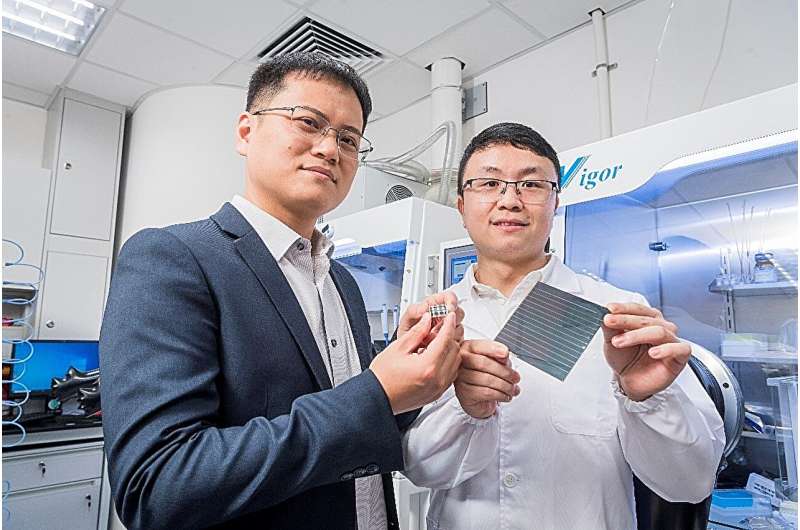Researchers at the City University of Hong Kong have developed a groundbreaking fabrication technique that promises to revolutionize the commercialization of perovskite solar cells. This innovation could lead to more affordable, efficient, and reliable solar energy solutions, paving the way for a sustainable future. The study, published in the prestigious journal Science, showcases the potential of this technology to address the global demand for clean, accessible energy.

Researchers Simplify Scale-Up of Alternative Holistic Solar Cells
The novel perovskite solar cell design was developed by a research team from the City University of Hong Kong. They made things simpler by incorporating the hole-selective materials with the perovskite layers. This breakthrough eliminates the necessity for a conventional organic transfer layer, which allows material cost minimization and simplification of production steps.
The team also substituted the traditional organic materials of fullerene and BCP with an inorganic tin-oxide electron transport layer. This modification not only improves the operational stability of the device but also enables superior thermal performance. Co-author Dr. Danpeng Gao, a post-doc at the City University of Hong Kong said: “The device structure reported in this work is regarded as one of the simplest architectures among all perovskite solar cells that have been developed up till now, showing great promise for future large-scale production.”
Another Source of Unique Efficiency and Stability
The researchers’ work has so far been successful. They have exceeded 25% power conversion efficiencies by controlling the oxygen vacancy defects of their tin oxide layer. Furthermore, the solar cells have shown excellent stability, with over 95% performance maintained after 2,000 hours of operation and under hard stressor test conditions.
It also exceeds the stable efficiency of conventional perovskite solar cells by trending toward available “shelf life,” says senior author Bruce Sutherland, an assistant professor at the King Abdullah University of Science and Technology (KAUST). This result indicates that our perovskite solar cells have made an important step forward to become stable enough initially, and easy for large-scale production ultimately,” said Professor Zonglong Zhu from the City University of Hong Kong’s Department of Chemistry.
Changing The Way We Think About Solar Power.
The implications of this research go far beyond the lab. The team’s advances are expected to dramatically change the global energy market and speed up the transition to renewable energy, which would save natural resources by manufacturing more reliable, efficient and cost-effective solar cells. This advance has the potential to significantly decrease the use of fossil fuels might have environmental and climate-change benefits.
Work in the next stage of the study will involve scaling up this novel architecture to larger perovskite solar modules for improved performance and scalability of this technology. Professor Zhu said: “This research is a vital step toward improving the potential of solar energy to execute sustainable and carbon-free production.”
